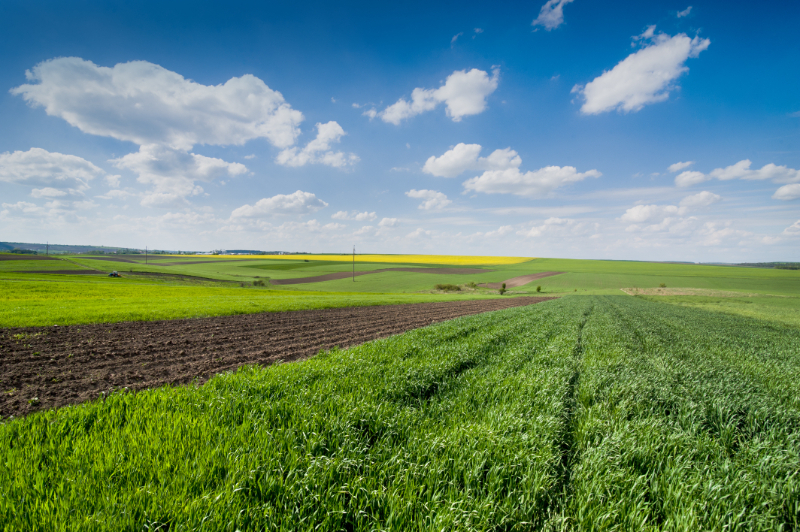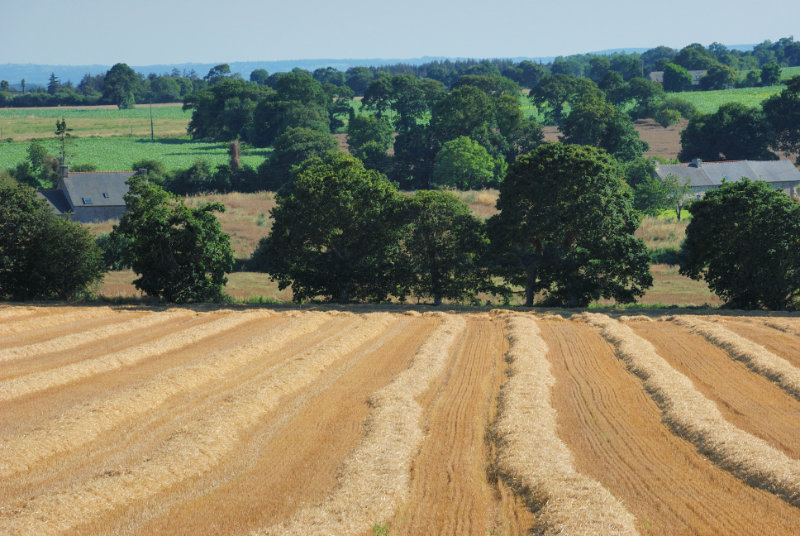How Long Does It Take to Get Planning Permission for Agricultural Land? Our local consultancy ensures you meet all regulations and maximise your land potential.
Do You Need Planning Permission for Agricultural Land?
In the UK, planning permission for agricultural land is not always necessary depending on its intended use. If the land continues to be used for farming activities, such as growing crops or grazing livestock, then no planning permission is required.
Any change of use that alters the land’s original agricultural purpose typically requires approval to ensure it complies with local planning regulations and environmental considerations.
Under the Town and Country Planning Act 1990, any development that involves constructing new buildings, changing land use, or significantly altering the landscape needs to be approved. For example, building a house or setting up a caravan site would need formal permission.
However, some agricultural developments benefit from permitted development rights (PDRs), meaning they can proceed without full planning approval.
These rights allow farmers to construct certain agricultural buildings, such as barns and storage facilities, if they meet specific conditions. Class Q permitted development rights also enable the conversion of existing farm buildings into residential properties, though they are subject to restrictions.
If the land is in a protected area, such as a National Park, stricter planning regulations apply. It's always best to check with the local planning authority before making any changes to agricultural land to ensure the development is compliant with UK planning laws.
Types of Planning Applications and Their Timelines
A Full Planning Application is required for significant changes, such as building residential properties, commercial developments, or large-scale agricultural structures. The process typically takes 8 to 13 weeks, depending on the complexity and whether an environmental impact assessment is needed.
An Outline Planning Application is used to gain approval for the principle of the development before submitting any detailed plans. If it's approved, a reserved matters application is then later submitted with the full details. The decision process usually takes 8 to 13 weeks, with additional time required for the detailed application.

A Permitted Development (Prior Approval Application) is needed for building storage buildings, building barns or converting barns into homes under the Class Q permitted development rights, as it needs to be approved by the local planning authority (LPA), which takes around 8 weeks.
A Change of Use Application is required when agricultural land is being converted to a different purpose, such as residential, tourism, or industrial use. The approval process can take 8 to 13 weeks but may take longer if objections or additional assessments are required.
The timelines can vary based on the complexity of the application, environmental considerations, and local authority workloads. However, getting professional advice and engaging early on with the LPA can help streamline the process.
Factors That Affect the Approval Process
Developments that may harm wildlife habitats, water sources, or air quality often require environmental impact assessments. If a project poses risks to biodiversity or increases flood risks, then additional measures may be needed to reduce these concerns.
The availability of roads, drainage systems, water supplies, and electricity can also affect the approval process. If a development requires significant infrastructure upgrades, planners may request modifications or reject the application entirely.
Converting agricultural land for residential or commercial purposes requires strong justification, and local authorities will assess whether the development meets housing or business needs while minimising the loss of farmland.
Public objections from local residents, environmental groups, or neighbouring landowners can also delay or impact the approval decisions. However, addressing these concerns through consultations and making adjustments can improve your application’s chances.
How Long Does a Standard Application Take?
The approval process for a standard planning application on agricultural land typically takes between 8 to 13 weeks, though several factors can influence this timeline.
For minor developments, such as small agricultural buildings or farm access roads, local planning authorities (LPAs) aim to decide within 8 weeks of receiving a valid application. However, if the proposal is complex, requires consultations, or faces objections, the process may take longer.
For major developments or changes in land use, the decision process can take up to 13 weeks. However, if an Environmental Impact Assessment (EIA) is needed, it can extend the process to up to 16 weeks or more.

Some agricultural developments can qualify under the permitted development rights, such as barn conversions under Class Q.
In these cases, a prior approval application is required, which should be determined within 8 weeks. However, if more details are needed or the LPA refuses approval, a full planning application may be needed, which extends the timeline.
Additionally, if an application is refused, an appeal can take several months to resolve. To improve the approval chances, applicants should engage with the LPA early on, submit a well-prepared application, and consult with planning professionals.
Kent Property Witness is a UK-based consultancy specialising in land and development advice, helping landowners, investors, and developers navigate the complexities of planning and property development. We provide expert guidance on land use, planning applications and regulatory compliance. We ensure clients can maximise their land’s potential while meeting legal and environmental requirements.

